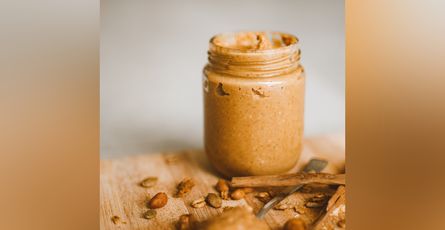Is Fermented Milk the Same as Buttermilk? (Explained)
-
 Sofia Cruz
Sofia Cruz
- 5 July 2023

Fermented milk and buttermilk are two dairy products that are often confused with each other. While they may look similar, they have distinct differences in terms of their production process, taste, and nutritional value. Understanding these differences is important for anyone who wants to use these products in cooking or baking.
Fermented milk is a type of dairy product that is made by adding bacteria to milk and letting it ferment. This process changes the composition of the milk, making it thicker and tangier in taste. Fermented milk is a staple in many cultures around the world, and it is often used as a base for other dairy products such as yogurt and kefir.
Buttermilk, on the other hand, is a dairy product that is made by churning cream into butter. The liquid that remains after churning is then cultured with lactic acid bacteria, which gives it a tangy taste. Buttermilk has been a popular ingredient in baking for centuries, and it is often used to make biscuits, pancakes, and other baked goods.
Fermented milk is a type of dairy product that is made by adding bacteria to milk and letting it ferment. This process changes the lactose in the milk into lactic acid, which gives the milk a tangy flavor and a thicker consistency.
There are different types of fermented milk, such as kefir, yogurt, and sour cream, and they all have different bacterial strains and fermentation times. Kefir, for example, is a fermented milk drink that is made by adding kefir grains, which are a combination of bacteria and yeast, to milk. Yogurt is made by adding specific strains of bacteria to milk and incubating it until it thickens. Sour cream is made by adding lactic acid bacteria to cream and letting it ferment for a few hours.
Fermented milk has been consumed for centuries and is believed to have many health benefits. It is a good source of probiotics, which are beneficial bacteria that can improve digestion and boost the immune system. Fermented milk is also rich in vitamins and minerals, such as calcium, vitamin D, and vitamin B12.
What is Buttermilk?
Buttermilk is a dairy product that has been traditionally made by churning cream into butter. The liquid that remains after the butter is removed is called buttermilk. In modern times, buttermilk is produced by adding lactic acid bacteria to milk, which ferments the lactose into lactic acid, giving it a tangy flavor.
There are different types of buttermilk, including traditional buttermilk, cultured buttermilk, and acidified buttermilk. Traditional buttermilk is the leftover liquid from churning butter, while cultured buttermilk is made by adding lactic acid bacteria to milk. Acidified buttermilk is made by adding an acid, such as vinegar or lemon juice, to regular milk.
Buttermilk is a popular ingredient in recipes for baked goods, marinades, dressings, and soups. Its acidic properties make it an excellent tenderizer for meat, and its tangy flavor adds depth to dishes.
How are Fermented Milk and Buttermilk Different?
Fermented milk and buttermilk are both dairy products that undergo fermentation. However, they differ in several ways:
- Origin: Fermented milk is a broad term that refers to any milk product that has been allowed to ferment. Buttermilk, on the other hand, is a specific type of fermented milk that is made by adding lactic acid bacteria to milk cream.
- Taste: Fermented milk can have a variety of flavors, depending on the type of bacteria used and the length of fermentation. It can be sour, tangy, or even sweet. Buttermilk, on the other hand, has a distinct tangy flavor that is often described as sour and creamy.
- Texture: Fermented milk can have varying textures, from thin and runny to thick and creamy. Buttermilk is usually thin and pourable, with a consistency similar to regular milk.
- Acidity: Fermented milk can have varying levels of acidity, depending on the type of bacteria used and the length of fermentation. Buttermilk has a higher acidity than regular milk, which gives it its tangy flavor.
It’s believed that fermented milk has been around for thousands of years, with evidence of its use dating back to ancient civilizations. Buttermilk, on the other hand, has a more recent history, with its production becoming popular in the United States in the early 1900s.
Overall, while both fermented milk and buttermilk undergo a similar process of fermentation, they differ in their origin, taste, texture, and acidity. Understanding these differences can help you choose the right product for your cooking and baking needs.
Uses of Fermented Milk and Buttermilk
Fermented milk and buttermilk are versatile ingredients that can be used in a variety of ways in cooking and baking. Here are some common uses:
- Baking: Fermented milk and buttermilk are often used in baking to add a tangy flavor and help activate leavening agents like baking soda and baking powder. They can be used in cakes, muffins, biscuits, and other baked goods.
- Marinades and brines: Fermented milk and buttermilk can be used as a base for marinades and brines for meats, poultry, and fish. The acidity in the milk helps tenderize the meat and infuse it with flavor.
- Dressings and dips: Fermented milk and buttermilk can be used as a base for creamy dressings and dips like ranch, blue cheese, and tzatziki. They add a tangy flavor and creamy texture.
- Smoothies and shakes: Fermented milk and buttermilk can be used in smoothies and shakes for a tangy flavor and creamy texture. They can also add protein and probiotics to the drink.
Overall, fermented milk and buttermilk are versatile ingredients that can add flavor and nutrition to a variety of dishes. They are particularly useful in baking and as a base for dressings and dips.
Wrapping Up
While fermented milk and buttermilk are both products of milk fermentation, they are not the same. Additionally, fermented milk, also known as cultured milk, is made by adding bacteria to milk and allowing it to ferment. This process produces lactic acid, which gives the milk its tangy taste and thick texture. Cultured milk is used in many dairy products, including yogurt, kefir, and sour cream.
On the other hand, buttermilk is a byproduct of churning butter. Traditionally, buttermilk was the liquid left over after butter was churned from cream. Today, most buttermilk is made by adding lactic acid bacteria to milk and allowing it to ferment. This produces a tangy, acidic flavor that is often used in baking and cooking.
While both fermented milk and buttermilk are acidic and have a tangy flavor, they are used differently in cooking and baking. Fermented milk is often used as a base for other dairy products, while buttermilk is used to add flavor and acidity to recipes. It’s believed that buttermilk’s acidic properties also help to tenderize meat when used in marinades.
Overall, while fermented milk and buttermilk share some similarities, they are two distinct products with different uses and flavors. Understanding the differences between the two can help you choose the right ingredient for your recipe and achieve the desired flavor and texture.


